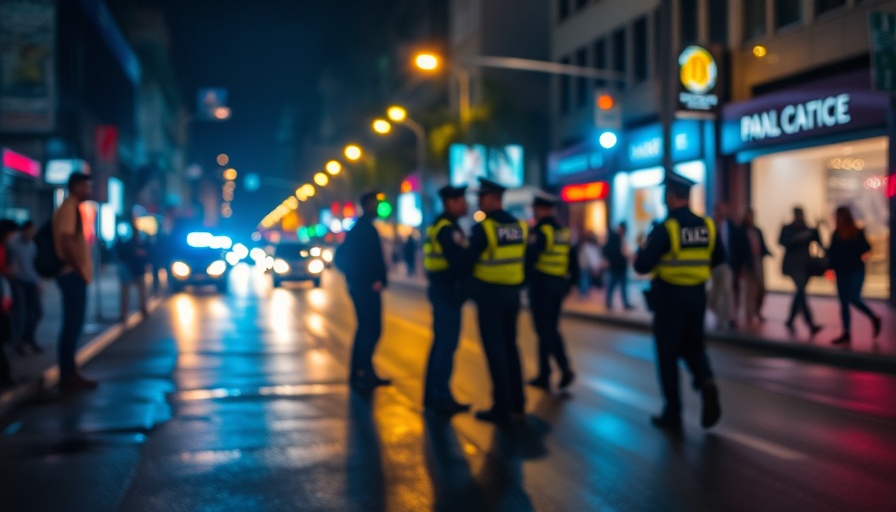
An Innovative Approach to Public Safety in Michigan
On March 14, 2025, a dramatic situation unfolded in Grand Rapids, Michigan, where a state police helicopter played a crucial role in apprehending a speeding motorcyclist who fled from a traffic stop. This incident highlights the effective use of aerial surveillance technology in modern law enforcement and raises important questions about the evolution of policing in urban environments.
The Incident Unfolds: Aerial Surveillance in Action
When Grand Rapids police attempted to stop a motorcyclist for a traffic violation, the situation escalated quickly. The motorcyclist sped away, prompting police to exercise caution and refrain from chasing him on the ground for the safety of other road users. Instead, they called in the helicopter, aptly named "Trooper 3," which tracked the suspect's movements from above, providing real-time updates that played a critical role in guiding the ground units.
Modern Technology Revolutionizing Law Enforcement
The successful deployment of aerial technology in this incident is an excellent example of how innovation is reshaping police operations. Helicopters equipped with advanced surveillance systems allow law enforcement agencies to monitor situations from a safe distance, reducing risk to officers and the public. This event underscores the increasing reliance on technology, a trend reflected in the growing use of body cameras and AI analytics in policing, as noted by experts in the field.
Impact on Public Safety and Community Relations
While the use of helicopters and high-tech resources in apprehending suspects can enhance public safety, it also necessitates discussions around police-community relations. Citizens often have mixed feelings regarding surveillance efforts. On one hand, many appreciate the safety and security that advanced technologies can bring. On the other, there's a growing concern over oversight and potential misuse of such resources, raising questions about police accountability and transparency.
Lessons Learned: Training and Preparedness
This incident can also serve as a teaching moment for police departments, emphasizing the importance of training in the use of advanced technology. Notably, law enforcement training programs now increasingly incorporate the use of aerial units and emphasize coordination between ground and aerial units, leading to improved responses in high-pressure situations.
A Future Where Technology and Community Collaborate
As technology continues to innovate the landscape of policing, fostering collaboration between law enforcement agencies and the communities they serve is critical. Police departments need to engage in discussions regarding the implications of their technological capabilities, ensuring they prioritize community needs and concerns while maintaining public safety. This collaborative approach could facilitate a smoother integration of technology into everyday policing, potentially setting the stage for more comprehensive reforms in law enforcement policies.
Encouraging Engagement in Law Enforcement Leadership
This dramatic incident is a call for police departments to scrutinize their use of technology, invest in training, and foster transparent dialogues with their communities. Policymakers, police recruitment leaders, and public safety advocates should consider how these technologies can be refined and integrated responsibly into everyday law enforcement practices.
Ultimately, as we navigate the complexities of modern policing, it's critical that technology serves not only to enhance operational efficiency but also to build trust within the communities they serve. Only through thoughtful engagement and robust policy reforms can we hope to achieve transparent, accountable, and community-centered policing.
 Add Row
Add Row  Add
Add 

 Add Element
Add Element 




Write A Comment